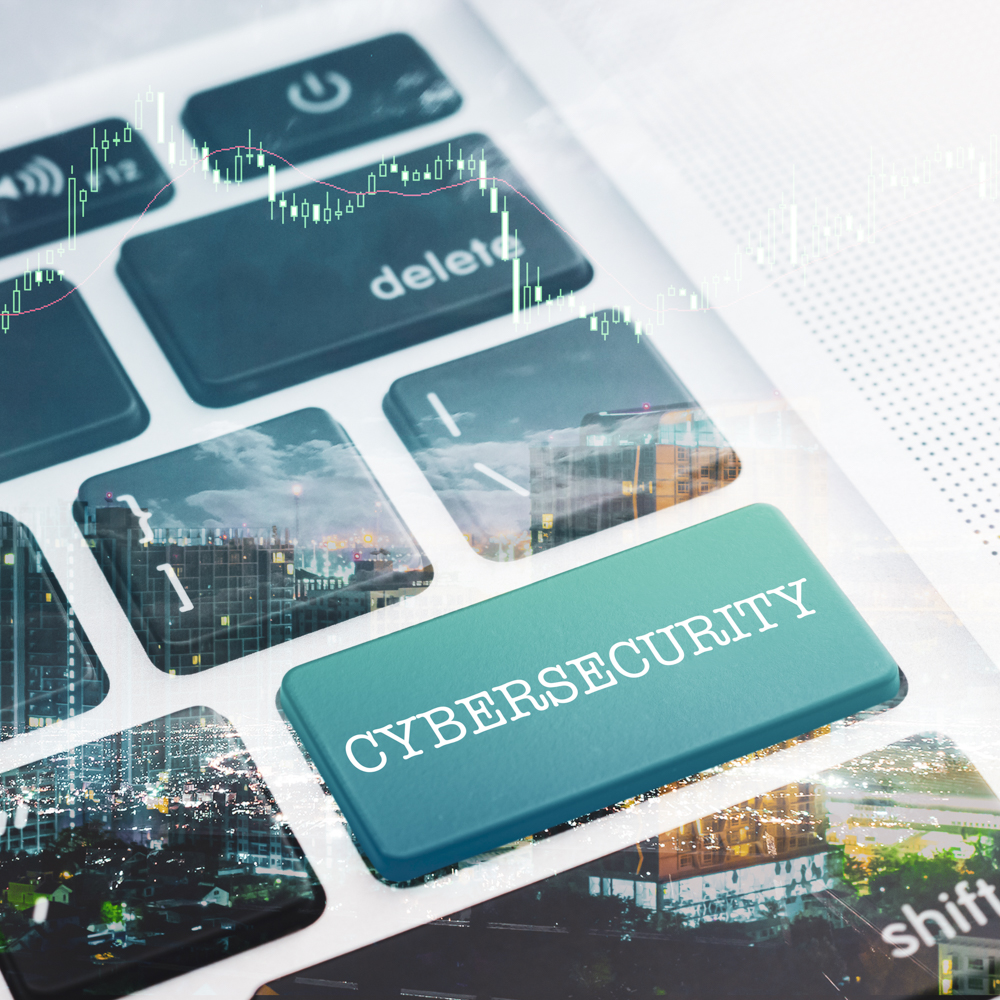With TitanHQ, you can deliver top-tier cybersecurity solutions to your small to medium-sized business (SMB) clients. Offer scalable web filtering, email protection, and phishing defense, all managed through a single multi-tenant console.
The market for managed services is estimated to be $335.37 billion in 2024, with a CAGR of 14.1% from 2025 to 2030. This massive market is highly competitive. Having an advantage over other MSPs is critical to growth. The security sector is another growth area with estimates of a market value of over $51 billion by 2029. Bringing these two things together under the umbrella of managed security services provides growth potential for an MSP; the challenge is identifying the critical components needed to protect client networks while maintaining scalability.
Why Cybersecurity is Critical for MSPs
If you follow the cybersecurity industry, you will undoubtedly be aware that attackers are continually evolving new tactics and techniques. No industry or size of organization is exempt from cyberattacks. Cybercriminals have no boundaries and will use whatever means they can to extort money, cause chaos, and damage resources and reputations; they look for "low-hanging fruit" - targets with poor security postures.
Cybercriminals also look for ways to enter the supply chain to facilitate mass attacks. The security of an MSP as part of a supply chain is critical. MSPs must harden their infrastructure against attackers that may use human-centric attack methods like social engineering and phishing and prevent techniques and tactics used to hack into or damage networks and databases.
MSPs are also in a unique position as custodians of client security. They can offer skilled staff to overcome the poor security resources in many client companies and use their buying power to offer cost-effective, exceptional security solutions. Vodafone found that over a quarter (28%) of small to medium-sized businesses would expect to go out of business after a single attack. An MSP is in an ideal position to prevent this.
As AI embeds itself into the cybersecurity landscape, the urgency to establish a robust security posture for MSPs and their clients increases. As such, cybersecurity is critical to protect an MSPs infrastructure and clients. Notably, almost half (47%) of MSPs added new security vendors in Q4 2024, thereby strengthening their offering, according to the Q4 Channel Futures Market Outlook MSP survey.
Overcoming Common MSP Security Challenges
MSPs offering security services to their clients must keep abreast of the security landscape.
However, even if the MSP does not deliver security, they should understand changes in the threat landscape to protect their business and clients. Common MSP security challenges include the following:
Keeping up with the Ever-Changing Threat Landscape
Cybercriminals love to create new techniques and develop evasive tactics to trick and manipulate people, processes, and technology. The result is that security measures are on a continuous cycle of upgrades to handle the following threats:
- AI-enabled cyberattacks, that create hyper-personalized phishing campaigns
- Malware that identifies attempts to remove it and modifies its behaviour to avoid detection.
- Mechanisms like QR code phishing that evade conventional email security solutions.
MSPs must keep ahead of the evolving threat landscape to ensure the security of their networks and clients. The security industry has developed AI-enabled solutions to future-proof efforts to prevent emerging threats and evasive tactics.
Balancing Security Solution Expectations of Clients with Cost
Offering next-generation AI-driven security solutions may come at a cost. However, some security vendors work alongside MSPs to deliver next-generation security at an affordable cost. The pricing is cost-effective as it can be offered as a bundle providing multiple layers of security. Additionally, the MSP's purchasing power and enterprise-grade capabilities make next-gen security accessible even to the smallest clients.
Unified Security Solutions and Seamless Integration with an Existing Tech Stack
A security-focused MSP's main remit is delivering effective, advanced, and cost-effective security to its client base. However, the security solution choices must work together seamlessly to achieve this. Unified security provides an MSP and its clients with a suite of coordinating tools that work harmoniously and have no negative interactions. An important point is that this unified solution base must also work seamlessly with existing technologies offered by an MSP. For example, where appropriate, does the unified solution suite integrate with Microsoft 365? Having a deeply integrated technology stack helps to reduce interoperability issues. A centrally managed security tech stack reduces an MSP's management and deployment overhead.
Managing Multiple Vendor Solutions
Security solutions often require skilled staff to configure and manage. If an MSP uses security solutions from multiple vendors, they not only have to manage multiple different interfaces, but they will likely need training across the suite of solutions. An MSP can overcome this challenge by choosing unified security solutions with a centralized management console. This reduces the training requirements and the burden of managing multiple tools that may have issues with interoperability.
Human-Centered Cyberattacks
Cybercriminals often exploit people through phishing, stolen login details, and social engineering, tactics that have proven highly effective in cyberattacks. The best way to mitigate this human-centered risk is through education. Comprehensive security awareness training that builds awareness and trains behaviour is critical to a robust security posture. The challenge for an MSP is selecting a security awareness training program that meets the unique needs of the MSP and its clients.
Web Filtering Solutions for MSPs
Web filtering (DNS filtering) enforces security policies based on domain categories. These policies prevent users (e.g., employees) from navigating to malicious or inappropriate websites when they click on a malicious link in a phishing email. Some advanced DNS filters, like WebTitan, also block malware, ransomware, and viruses.
From an MSP perspective, some DNS filters can be challenging to manage and configure, with misconfigurations causing missed phishing attacks. Also, conventional DNS filters can be inaccurate and block legitimate sites. Worse still, conventional, non-AI-enabled web filters often miss zero-day and emerging threats. The management overhead of conventional web filters can mean an MSP spends too much time managing the filter.
An MSP should explore AI-enabled web filters that use automation to configure settings based on predicted threats. This not only improves detection rates but also helps reduce the management overhead.


Email Security and Anti-Phishing for Clients
Phishing brings a heavy cost to business. Ransomware, Business Email Compromise (BEC), and data breaches often start with a phishing email. Unfortunately, conventional email security solutions, including some of the built-in capabilities of Microsoft 365, miss modern, evasive phishing attacks. Cybercriminals increasingly turn to AI to help them carry out effective phishing campaigns. Generative AI is being used for intelligence gathering to generate highly personalized phishing emails. Email security research from TitanHQ and Osterman Research found that 61.5% of respondents expect increased attack volumes based on Generative AI.
An MSP must provide advanced, AI-driven email security and anti-phishing that can handle the volume and sophistication of modern email-borne attacks. Advanced solutions must be able to identify and stop emerging threats and zero-days that have yet to be patched by vendors.
Evasive tactics are another area of concern in modern attack scenarios. Tricks like using QR codes to hide malicious links are used to circumvent conventional security email gateways (SEGs). An integrated cloud email security solution (ICES) uses a mix of AI, behavioural analytics, and natural language processing (NLP) to identify cleverly disguised social engineering-based phishing campaigns.
Did You Know?
cyber attacks begin with phishing
to seamlessly install PhishTitan
estimated global cybercrime cost
to stop & spot a phishing attack
Security Awareness Training and Client Enablement
A fundamental part of preventing human-centered cyberattacks is to educate the workforce about their role in security. Phishing and social engineering are critical pathways for harmful cyberattacks, such as ransomware and data breaches. The safe use of the internet and mobile devices, along with an appreciation for data security and privacy, are essential aspects of maintaining a secure working environment. Psychologists and security experts design security awareness training to educate employees and the broader community on cybersecurity. The training is delivered in the form of interactive videos and games, building up the trainees' knowledge.
Behavior-based security awareness training is personalized to each individual. It's often paired with phishing simulations, delivered through a central platform that lets MSPs create custom phishing simulations to test employee responses. The simulated phishing platform will provide contextual, in-training feedback to help the individual learn from their mistakes. A report from Datto on MSP opportunities found that almost half (43%) of SMBs want to implement employee cybersecurity training.


Seamless Integration with Your Tech Stack
All of the above are essential security measures in an evolving threat landscape. However, they must also integrate seamlessly with your MSP tech stack; otherwise, the management burden will reduce their effectiveness and usability.
When evaluating security solutions to add to an MSP tech stack, the MSP must consider certain options:
- Are the solutions designed with an MSP needs in mind?
- Does the vendor offer a unified set of security solutions that cover a range of security measures?
- Are the solutions future-proofed? That is, do they offer advanced approaches to emerging threats and evasive tactics used by attackers?
- Can you manage, monitor and secure your client’s IT infrastructure from a centrally managed console, seamlessly and with no interoperability issues?
- Do the solutions support the use of Remote Monitoring and Management (RMM) software for ease of deployment to multiple clients?
- Do the security solutions integrate with existing offerings like M365?
Notably, an MSP can differentiate itself from the competition by offering a fully integrated tech stack. A survey from Pax8Nebula found that over half of MSPs believe that a full tech stack would enable them to differentiate their business.
Why MSPs Choose TitanHQ
TitanHQ has worked with MSPs to design a unified, modular security stack that meets their unique needs. Our MSP partner program offers a dedicated channel manager, marketing support, white-labeling, exceptional support, and more. Our security solutions are designed to meet MSP requirements, offering the following:
- Multi-tenant dashboard with role-based controls
- White-label security tools to grow your MSP brand
- MSP-friendly pricing structure with bundle pricing options to maximize ROI
- Strong threat detection capabilities – AI powered cybersecurity platform
- Ease of deployment and integration
- Comprehensive reporting
- Automated updates, zero maintenance overhead
- Integrated with leading RMM/PSA tools (e.g., ConnectWise, Datto)
- MSP-first support model with 24/7 access – no additional cost
- Full migration assistance from existing solutions
Get Started with TitanHQ
Our customers love TitanHQ’s security stack for MSPs.
I would recommend TitanHQ to another MSP. They're really simple to work with, they're great value for money, and they have the right software stack where you can pick and choose the pieces that you need.
Read more MSP testimonials.
Get started with TitanHQ’s security stack by signing up for a free trial.
Sources
Frequently Asked Questions (FAQs)
An MSP must deliver a profitable and sustainable business in a highly competitive space. An MSP must deliver cost-effective, cutting-edge, and future-proofed security solutions to do this. MSPs must explore solutions that are designed with an MSP in mind. These solutions will ensure that deployment, management, and configuration are performed centrally to reduce management and maintenance overhead. The solutions will also be designed to service multiple clients as a multi-tenancy cloud service. The right choice of unified, MSP-focused solutions allows an MSP to deliver enterprise-grade solutions that use the latest technologies, like AI, to detect emerging and evasive threats.
The best phishing protection tool for MSPs must have the following capabilities:
1. High capture rate.
2. Centrally managed.
3. A unified approach that integrates seamlessly into an existing tech stack.
4. AI powered
5. Future-proofed for emerging and evasive threats.
TitanHQ anti-phishing has a 100% catch rate for malware and phishing as tested by the independent authority Virus Bulletin.
TitanHQ security solutions are all centrally managed.
TitanHQ security solutions are unified and integrated into existing tech stack components like M365.
TitanHQ security solutions are AI-driven, future-proofing your security offering against emerging threats.
TitanHQ integrates with a variety of RMMs and PSAs. Popular RMMs include Kaseya, Datto, Connectwise, N-able, NinjaRMM, Microsoft Intune.

Geraldine Hunt
- DNS FILTERING
- EDUCATION
- SCHOOLS
Get a Demo or Trial Today

